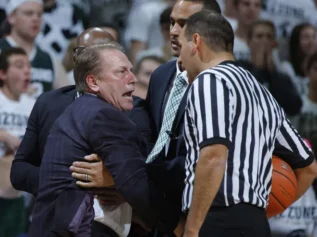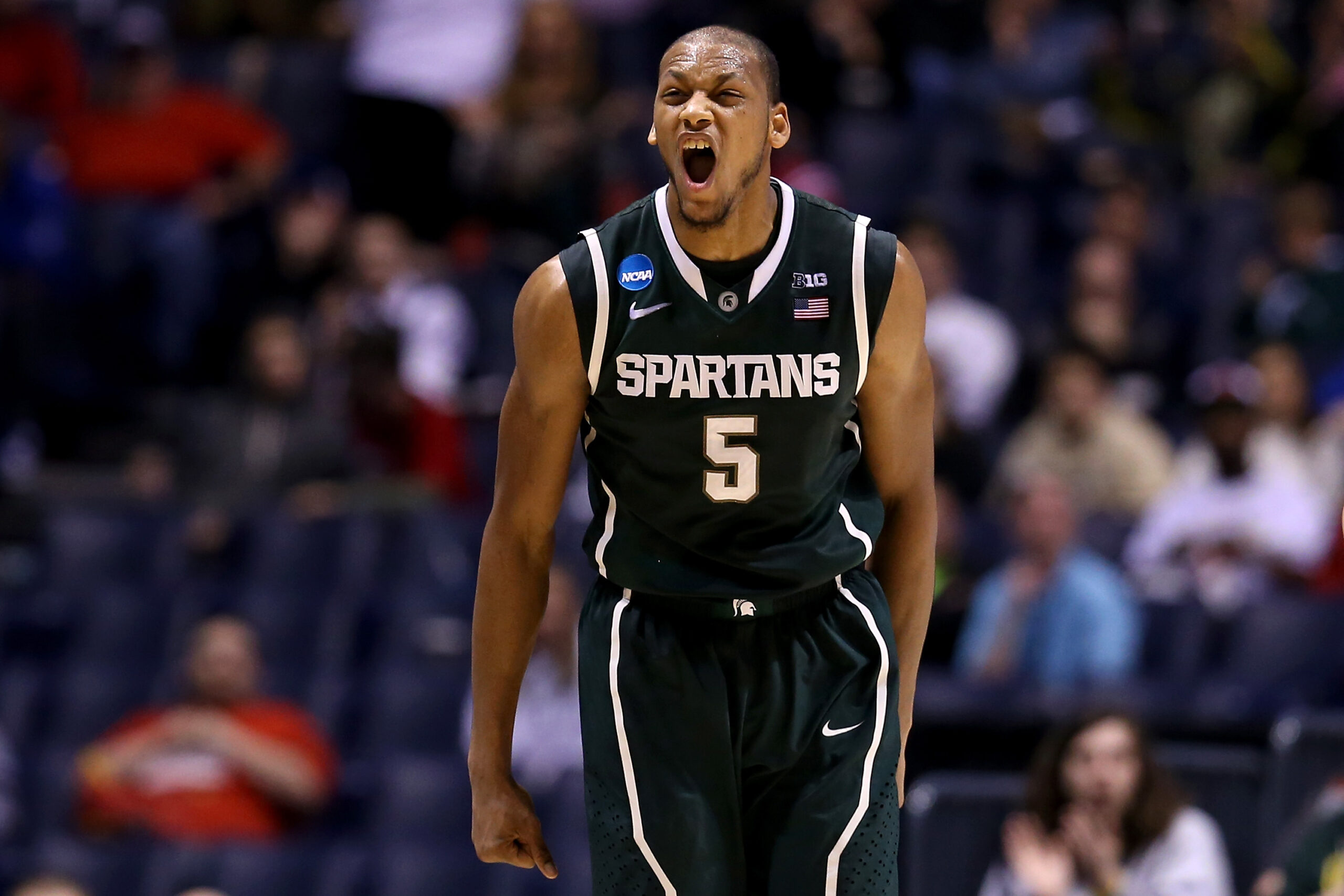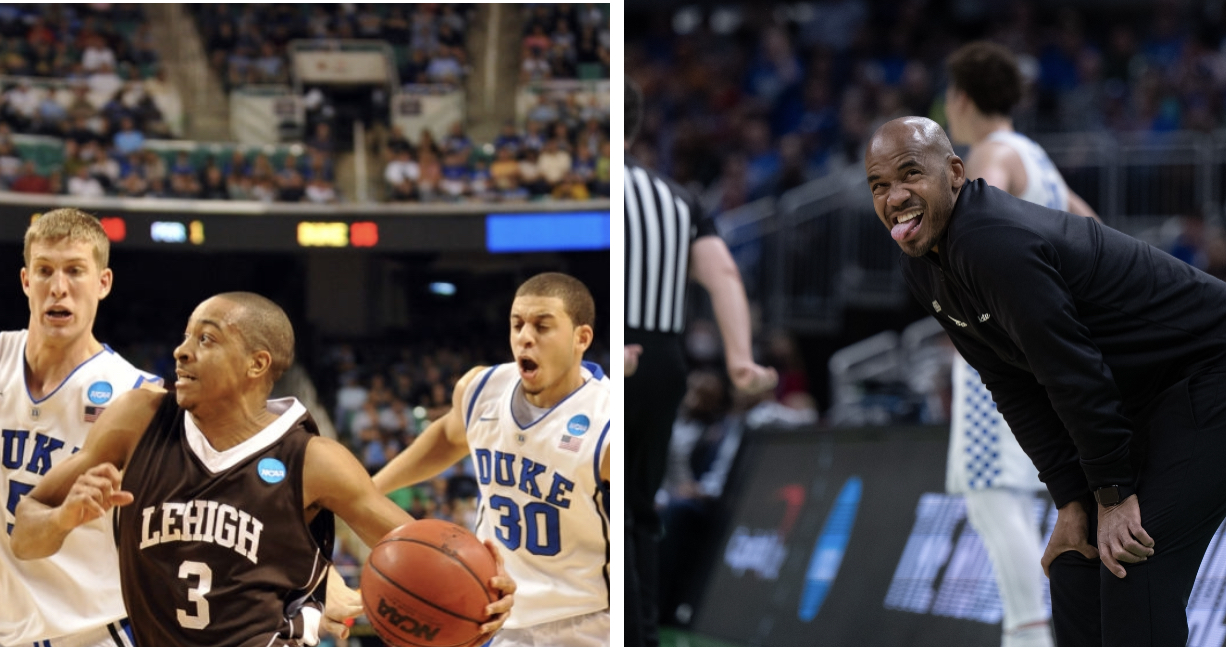After Kyle Casey’s freshman year in college, the 6-foot-7 forward was being mentioned as a legitimate NBA prospect. Recruited by some major D-I programs, he chose to attend Harvard University, where he recently earned his undergraduate degree. Away from the glare of the national spotlight, he was instrumental in Harvard’s resurgence over the last few years, helping to transform the once moribund program into an Ivy League powerhouse.
There are many talented basketball players, who are aren’t big names like Andrew Wiggins or Jabari Parker, hoping to hear their names called on NBA Draft night. If that doesn’t happen, they’ll settle for a spot on an NBA Summer League roster, determined to play their way into a training camp invitation. Kyle Casey is among them. Here is Part I of his journey.
Harvard had Michigan State on the ropes.
This spring, on the evening of March 22nd, during what many consider the most exciting stretch of college basketball’s marquee showcase, the Crimson were wobbling the Spartans. Michigan State was a popular pick to win the National Championship on many March Madness brackets, but they were fading, eating stiff jabs, scientific hooks and treacherous uppercuts in the second half of their Round of 32 NCAA Tournament game against the guys from the Ivy League.
At halftime, Michigan State held a comfortable 47-33 lead. But 12th-seeded Harvard, who’d previously beaten 5th-seeded Cincinnati in their earlier tournament game, showed that they weren’t merely happy to simply be there.
“I kept saying, ‘They’re going to come back, you better realize that,” Spartans Coach Tom Izzo said in his postgame press conference.
The Crimson did just that during a torrid second-half stretch. They rang up three-pointers, got to every loose ball, outfought and outwrestled their talented opponents from the rugged Big Ten Conference for crucial rebounds, contested every shot and executed on both ends of the floor with sense of passion and precision that was shocking to those who were seeing the Ivy Leaguers play for the first time.
When Canadian sharpshooter Laurent Rivard splashed a corner three-pointer with 7:11 remaining, after Crimson junior Wesley Saunders’ previous steal and dunk had tied the game at 55, the collective roar in Spokane, Washington’s Veterans Memorial Arena was ear-splitting.
Harvard looked poised to pull off a tremendous upset that would have catapulted them into the Sweet Sixteen. It was an amazing moment, given that seven years ago, Head Coach Tommy Amaker had taken over a moribund program that hadn’t made an NCAA Tournament appearance since 1946, back when Jackie Robinson was playing with the Dodgers’ AAA affiliate, the Montreal Royals, prior to his breaking Major League Baseball’s color line.
The Crimson were competing in their third straight NCAA Tourney, a remarkable turnaround for a program that went 8-22 during Amaker’s first season. And one of the biggest reasons for that turnaround, 6-foot-7 senior forward Kyle Casey, in those furious last few minutes against Michigan State, was sitting on the bench, helpless, unable to help his team.
“Early on in the game, I was going up for a rebound and an elbow hit me under the eye,” said Casey. “My nose started bleeding. I felt dizzy. I tried to play through it, but I threw up at halftime. It was determined that I had a concussion and there wasn’t anything I could do but be a cheerleader for the rest of the game.”
Michigan State regrouped in the game’s final minutes and held on for an 80-73 victory, dashing Harvard’s hopes of a deep tournament run.
It was a tough way for Casey to close out a decorated career. It was also ironic due to the game’s geography and location, because years ago, not far from where he sat on the bench, with blood dripping and his head throbbing, Casey had come into the world in the midst of much more adverse setbacks.
Born in Bremerton, Washington, he had to be airlifted to a Tacoma hospital within minutes of his birth for emergency surgery. He came out of the womb with an Omphalocele, an abdominal wall defect where his intestines were on the outside of his stomach, a condition with an associated high rate of infant mortality.
“They had to do the surgery to put his intestines back in his stomach,” said his mother, Sharon Casey. “He was in the neo-natal intensive care unit for his first ten days. He couldn’t eat for his first few days and I wasn’t able to hold him. I had to stick my hands through these little gloves in the incubator. Kyle came here fighting. Literally, from the moment he was born, he was going through adversity.”
When he was able to return home, Sharon had to rush him back to the hospital five days later for another emergency surgery, this time for a hernia that had him crying uncontrollably.
With his medical struggles behind him, Casey grew into a big, active kid. Sharon later moved her family to Louisiana, on the outskirts of New Orleans, when he was six, where Kyle and his brothers spent hours shooting hoops at a nearby playground.
“Louisiana was where we really started to hoop, but we didn’t play organized basketball at the time,” said Casey. “My older brother Randy and I used it as an outlet, which kept us out of trouble. We played a lot, and we’d dribble around the neighborhood, working on our game. We invented our own drills, like dribbling with our eyes closed while the other person would be walking in front, telling us where to go. It became a very big part of our lives.”
But he wasn’t aware of how big of a part the game would play until he moved with his family to the town of Medway, Massachusetts when he was 12 years old. He joined his first organized team in a local league and after one particularly good game, was approached about joining an area AAU travel team.
“I’d never even heard of AAU before,” said Casey. “I was in the seventh grade, tried out for the team, the Boston Blazers, and made it. That’s where basketball really began to take off for me.”
The Blazers were one of the best teams in the state and Casey flourished as a fluid, graceful, athletic player who was bigger than most of his peers, who had good footwork in the post, played with high-energy and was versatile enough to guard every position on defense.
He worked hard to improve his skills, but he was naturally blessed with an elite athleticism that had long been coded into his DNA. His mother Sharon was once an elite high school sprinter who ran at Texas Southern University and competed against track and Olympic legend Jackie Joyner-Kersee when they were prep rivals in East. St. Louis, Illinois.
“My mom is where I get my athleticism, ability and agility from,” said Casey. “She was a great track athlete, very fast and explosive.”
After his freshman year in high school, Casey was extended an invite to Duquesne University’s Elite Basketball Camp in Pittsburgh. At the conclusion of one of the sessions, Duquesne coach Ron Everhart pulled him aside and extended a scholarship offer. Ecstatic, he called Sharon and told her the fantastic news.
“I called her and was like, ‘Mom, he just offered me a scholarship! I’m good! I’m going to college for free. I’m going to Duquesne, Ma!!!’ recalls Casey. “I was so excited I was ready to commit that day. My mom was happy, and said, ‘This is just the beginning, anything can happen with this.’”
Casey excelled as a student and athlete at Brimmer and May, a small private school in Chestnut Hill, Massachusetts. Every day, he and Sharon would leave the house at 6:30AM for the 45-minute drive to the school. During basketball season, they wouldn’t return back home until around 9:00PM.
“I actually changed jobs so I could work in Boston and be closer to him when he started attending Brimmer and May, where it was easier for me to drop him off and then go to work,” said Sharon. “During the season, we’d get home late and he still had homework to do. Sometimes, I’d go down the hall and find him doing his homework at one o’clock in the morning and would say, ‘That’s enough! You have to get some sleep.’ He was always self-motivated, disciplined and organized from a very early age.”
By his junior year, he stood 6-foot-7, and was widely regarded as the best basketball player in his class in the New England region, as well as one of the best in the entire country. Schools like Texas and UCONN were in on his recruitment. With his ability in the classroom, Stanford and Vanderbilt recruited him hard. He also liked Providence, along with Steph Curry’s alma mater, Davidson and George Washington University.
When he received his first phone call from the Harvard staff, his immediate response was, “Yeah right, picture that happening.”
“Initially, I had my eyes on a bigger stage, as far as basketball was concerned” said Casey. “I totally dismissed the thought of playing at Harvard. I knew absolutely nothing about their basketball team.”
Encouraged by his mom and high school coach to keep the option open, he attended a game during his junior year.
“I remember thinking, ‘Man, I can play here right now on this team,’” said Casey. “The new coaching staff was in the very beginning stages of reconstructing and building the program. I wasn’t really feeling Harvard at the time.”
“Back then, you could go to a Harvard game and park right next to Head Coach Tommy Amaker’s car in the parking lot,” said Sharon. “No one was there, and this was when they had Jeremy Lin.”
On Amaker’s first visit with Kyle at Brimmer and May during his junior year, there was something about his approach that made an impact.
“Hearing him speak about what he had envisioned for the program, what his goals were, I hadn’t heard anyone speak so passionately about their programs during my recruitment process,” said Casey. “It was like he had this tunnel vision. And they were terrible at the time, but he was talking about building a dynasty.”
Casey was also impressed with Amaker’s honesty.
“All of the other coaches were telling me how good I was, telling me things that they thought I wanted to hear,” said Casey. “But Coach Amaker was real with me. I appreciated that and it stuck with me.”
“I told him about the impact he could have here, why we really wanted him, what we could accomplish,” said Amaker. “And I told him, ‘Hey, we aren’t there yet. We know we have a long way to go. Where we are right now is not where we want to be. But we are going to change this.”
Amaker knew that if he could convince Kyle to attend Harvard, it could initiate a paradigm shift in terms of the program’s trajectory.
“Kyle was a critical piece to the vision and the puzzle for us, without a doubt,” said Amaker. “He was very talented, he was exciting. He had this flair about him. He was a very athletic kid who played an above-the-rim game. His vibe, personality and the way that he’s wired, he’s just a magnet. Everyone we talked to spoke so incredibly highly about him. We knew, given all of that, that he could be a signature recruit for us. And once he decided to come here, he gave us a huge sense of credibility. A lot of people were recruiting him. Kyle was the type of talent that could elevate our product on the court. He was an X-factor, and I just felt like we had to get him because he would be the type of player that people would be talking about for years to come.”
But getting him to come to Harvard was not easy. After that initial visit, Amaker invited Casey and his mom to visit with the coaching staff on campus. It was a visit that Casey was not very interested in taking.
“We had the whole staff waiting for him in the lounge, and when he walked in, I could tell that something was wrong,” said Amaker. “His mom told me after the meeting that they’d had a big argument in the car on the drive over, and that he was not happy about coming in to sit down with us.”
“I allowed Kyle to go down this fantasy road of entertaining other schools from a conversational perspective, but I already knew that if he got into Harvard, that was where he was going,” said Sharon. “He didn’t want to play at Harvard and was upset that we were going to meet the coaching staff. I told him, ‘If you get a score on the SAT that qualifies you for Harvard, you’re going. That’s it! We’re not even entertaining anything else.’ We had a Come-to-Jesus conversation in the car on that ride over to Harvard. And Jesus and I won.”
“Sharon was very positive about the Harvard opportunity for him,” said Amaker. “He was looking at something on a bigger stage, a higher profile as far as basketball is concerned and I get that. There’s nothing wrong with that. But Sharon made me aware that she wanted this for him, for what it could do for the rest of his life. She didn’t want him to miss out on an opportunity that she felt was a chance of a lifetime.”
“I told Tommy, ‘Don’t worry, he’s coming, let me handle this,” said Sharon, chuckling at the recollection.
But Casey began paying more attention to what was going on with Harvard’s basketball program. During Amaker’s second season on campus, the Crimson became a .500 team. Casey went to Boston College to check out the B.C.-Harvard game in January of 2009, and became one of the first people to succumb to the hypnotic nature of Linsanity.
With B.C. coming into the game ranked 17th in the national polls, and having beaten Harvard soundly in 15 of their last 16 games, most people expected a blowout. The fact that the Crimson had never beaten a ranked team before exacerbated that feeling. But Jeremy Lin dazzled under the national spotlight, scoring 27 points in Harvard’s 82-70 victory.
“I saw Coach Amaker’s vision falling into place,” said Casey. “And to know that he wanted me to be a focal point of this vision that he had, that is a very powerful message. And it’s very difficult to turn down. I was at that B.C. game and the atmosphere was amazing. And Jeremy cooked (Boston College guard) Tyrese Rice. I mean, he was killing him! That’s when I really started feeling Harvard and they became the frontrunner. I was getting some heavy looks from some established, big-time programs. It was really hard to take that leap of faith. But I started to think, more and more, “Man, if I get into Harvard, I think I’m going to go.”
To Be Continued…Read Part II Here



